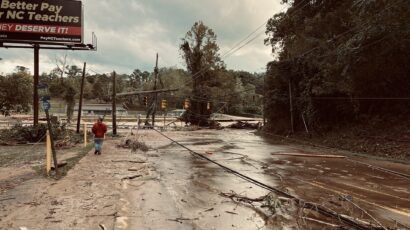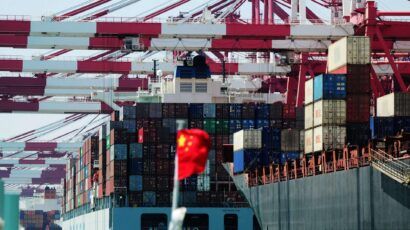A dark cloud over India
By Ashish Fernandes | December 18, 2015

Frozen bank accounts. Cancelled operating licenses. Court cases, arrests, and punitive legal actions based on fabrications. International donations cut off. Individuals with legitimate business forcibly detained at the airport, harassed by officials, and prevented from travelling.
It all may sound like something from an old Cold War-era dictatorship, but this kind of hounding is happening in the modern-day, technology-friendly democracy of India. Sections of the Indian government, led by the Ministry of Home Affairs, have set their sights on organizations and individuals who have been critical of its policies and actions on anything related to the environment and development, but most particularly on the extraction and burning of coal. The ruling party wants to more than double India’s mining of coal, to 1.5 billion metric tons by 2020, despite the risks this poses to the environmental well-being of the country and the rest of the world.
Coal mining is a hot-button issue in India, with widespread community opposition to new coal projects due to the loss of forests and farmland, along with the widespread air pollution and health problems that the industry generates. But anyone challenging the need for further coal expansion is often hounded mercilessly in an attempt to suppress voices of criticism. Apart from the very real economic, social, and environmental costs of coal to India and Indians, this government-led hounding of nongovernmental organizations (NGOs), activists, funding foundations, and others makes for a dark political climate, sending a signal to private power companies that it is okay to threaten journalists and media outlets with spurious lawsuits. Even if the suit is completely baseless and the plaintiffs cannot hope to win in a court of law, they win in another way—by burdening their critics with such time-consuming and expensive legal defenses that they abandon their opposition and 'self-censor.' Those in the world beyond India’s borders should care about this situation, not just because of what is happening in the world’s largest democracy, but because the planned massive increase in coal-burning will impact millions of people directly, and make the global fight against climate change much more difficult.
To be sure, India has little historical responsibility for creating the problem of climate change, and even today contributes just six percent of global emissions, far below the United States and China on absolute terms. And if per capita consumption is considered, the disparity becomes even more stark. India argues, with some justification, that it needs to provide modern energy to several hundred million people currently living without it, and it cannot be asked to keep millions of its citizens in energy poverty because of a climate crisis that was not of its making.
But where the Indian government errs is in failing to recognize that today, renewable energy and energy efficiency have come a long way, making it possible (and in many cases more financially viable) to meet legitimate energy needs without having to rely on a massive expansion in coal infrastructure. And persecuting the critics of its aggressive coal production policy will not change the basic facts.
India at an energy crossroads. The realization that the financial tide is turning against coal—even in India—is growing. Recent bids for utility-scale solar photovoltaic projects are on a par with those from new coal power projects. Plans for new coal power plants are at a standstill, as existing coal plants struggle for profitability amidst fuel shortages, low demand, and low capacity. The same minister who talks about tripling coal extraction has also said that the government will not be investing in new fossil fuel projects, and that the thrust will now be on renewables. The Indian government has announced plans for some of the world’s most ambitious targets for energy generated from solar and wind: 100 gigawatts (GW) of solar and 75 GW of wind by 2030. So perhaps the 1.5 billion-ton goal is loose talk by ambitious ministers eager to grab headlines, perhaps it’s an articulation of an ‘all of the above’ energy strategy, or perhaps it’s a ‘climate-politik’ ploy to leverage the finance and technology transfers that India needs to wean its energy system off coal and toward renewables. Most likely, it’s a combination of all these factors.
The world outside the subcontinent will be affected by India’s energy choices as much as it will by how quickly China, the United States, and the countries of the Organization for Economic Co-operation and Development can wean themselves off of coal and fossil fuels. Current voluntary carbon emissions targets agreed to at the Paris talks fall far short of the 2 degree goal laid down at Copenhagen, let alone the 1.5 degrees that the Paris agreement now urges countries to aim for.
There is no doubt that getting India to replace as much as possible of its planned coal build-out with renewable energy is essential—both for the global climate and to spare millions of Indians from the impacts of what will be an environmentally disastrous expansion of coal production. Those who point this out, however, find themselves in the crosshairs of the government’s Ministry of Home Affairs.
My own organization, Greenpeace India, has had its license to receive money from overseas cancelled under a draconian law known as the Foreign Contributions Regulations Act. Prior to the cancellation, donations from abroad accounted for 30 percent of our budget. Our bank accounts have been repeatedly frozen, and we are constantly forced to seek court protection from government heavy handedness—protection we have repeatedly received as the courts have found no wrongdoing on our part.
Nor is the Ministry of Home Affairs’ attack on dissenting voices restricted to Greenpeace. It happens to anyone who criticizes the government’s policies on coal and energy, including reputable international funding foundations, activists, reporters, and other NGOs. The hounding of individuals such as Teesta Setalvad—one of India’s best-known social activists—and India’s former Additional Solicitor General Indira Jaising are clear indications that at least some forces in the Bharatiya Janata Party, the ruling party of India, are out to settle old scores and suppress any criticism. Setalvad was hit with a now-familiar routine: accusations of receiving funds illegally from overseas, her home and office raided, and her bank accounts frozen.
Which raises the question: Why now?
Payback time? Some of the reasons for this behavior by the ministry may be economic. By 2012, the Indian economy had begun to slow down, feeling the effects of the turmoil in world markets. Corporate India suddenly found itself in trouble: It had taken on mountains of debt during the boom years of 2007 to 2011; with the slowdown, repayment problems loomed. At the same time, the corporations also felt under siege from new laws that empowered local communities: Instead of just rolling over when asked to part with their land for the construction of power plants, factories, or mines, villagers were now asking more questions and proving more difficult. In some cases, they were refusing outright to give their consent for mining projects. A corporate-controlled media quickly spun the line that onerous environmental and social safeguards, championed by the activist brigade, were strangling the Indian economy—despite evidence to the contrary.
In response to this trend, certain segments of the national administration then in power—the United Progressive Alliance—went on a clearance spree, disregarding all environmental and social considerations. The more progressive elements in the government, such as former environmental minister Jairam Ramesh, were either sidelined or asked not to speak up publicly. Common wisdom had it that corporate India had to be won over, and for that the red carpet had to be laid out for all manner of projects. A clear message needed to be sent that issues of environmental and community rights were secondary to the interests of corporate India.
The gambit failed, as the disaffection with the UPA remained, and corporate India remained for the most part firmly in the camp of the Bharatiya Janata Party. And some of the latter’s biggest friends and benefactors have billions at stake in the coal industry. Coal projects by India’s Essar and Adani multinational conglomerates have been badly hit by environmental protests; environmental and human rights groups, Greenpeace included, played a key role in exposing problems with several of these projects. Essar’s proposed Mahan coal mine in the central Indian state of Madhya Pradesh led to strong community opposition. Plans to permit the mine have finally been withdrawn by the government—a significant financial setback for the company and a huge victory for the community. Adani’s coal projects in the western states of Gujarat and Maharashtra —and in Australia’s Carmichael mine—have all faced vociferous opposition from environmental groups, Greenpeace included, creating significant financial and public relations troubles for the company. Essar’s Ruia family and Gautam Adani of the Adani group are known to be strong supporters of the BJP. Many observers believe that the targeting of Greenpeace and other groups by the new government is payback for the opposition to these coal projects.
A global leader must respect civil society and the right to dissent. At the UN General Assembly’s meeting on Sustainable Development Goals in September 2015, India’s Prime Minister, Narendra Modi, paid the customary homage to achieving development while protecting the environment. As anyone with any experience of India knows, civil society, NGOs, and voluntary organizations play a vital role in terms of sharpening policy and ensuring the proper delivery of services aimed at improving education, providing rural electrification, health, sanitation, and employment. The ruling party presumably wants these efforts to continue (it can hardly deliver on its election promises otherwise), but at the same time it wants any criticism of its policies—or indeed any advocacy for new policies—to stop. This is counterproductive.
In recent weeks, no less an authority than the governor of the Reserve Bank of India has stressed the importance of dissenting opinions and ideas for India’s progress. And Narayana Murthy, the man regarded as the father of India’s infotech industry, echoed a growing fear among industry that “intolerance” is harming India’s development.
The new government’s honeymoon is over. Election-time promises now sound empty and the bombastic rhetoric is wearing thin. Corruption scandals have started to raise their heads. The Indian economy is still growing at a rate below expectations; the average Indian has seen his lot continue to deteriorate; and the rumblings of discontent from the public, and even former cheerleaders, are growing. Prime Minister Modi has expended a lot of his political capital on foreign junkets, supposedly to improve relations with world powers, particularly the United States, the European Union, and the United Kingdom. The need to reform the UN Security Council and India’s claims to a seat at the table of global leadership are significant factors in the government’s calculations. The narrative of "restoring India’s lost pride" was dominant in Prime Minister Modi’s election rhetoric.
Ironically, the Indian government’s targeting of dissenters, critics, and civil society is now tarnishing India’s name in the international community of democratic and liberal nations. The government has already encountered criticism from foreign governments, influential segments of the Indian diaspora, intellectuals, and artists, as well as unflattering international media coverage over the growing turmoil in India on issues of dissent, tolerance and democracy.
What does the government of a huge nation—elected with a massive majority—have to fear from a bunch of activists, many of whom will not even willingly sit in the same room as each other, and who disagree vociferously over policy minutiae? The fear of NGOs is on the face of it completely illogical. But what all of the government’s targets have in common is that, in one way or another, all have worked for a more informed and broad-based participation of people in governance, empowering communities and the public to question government decisions, actions or policies, and check corporate power. This is nothing but democracy in action.
When one views events through this lens, it becomes clear that what sections of India’s ruling party fear is in fact deep democracy itself. This is a dangerously ironic place for the government of the world’s biggest democracy to find itself.
Together, we make the world safer.
The Bulletin elevates expert voices above the noise. But as an independent nonprofit organization, our operations depend on the support of readers like you. Help us continue to deliver quality journalism that holds leaders accountable. Your support of our work at any level is important. In return, we promise our coverage will be understandable, influential, vigilant, solution-oriented, and fair-minded. Together we can make a difference.
Topics: Climate Change, Opinion, Special Topics















